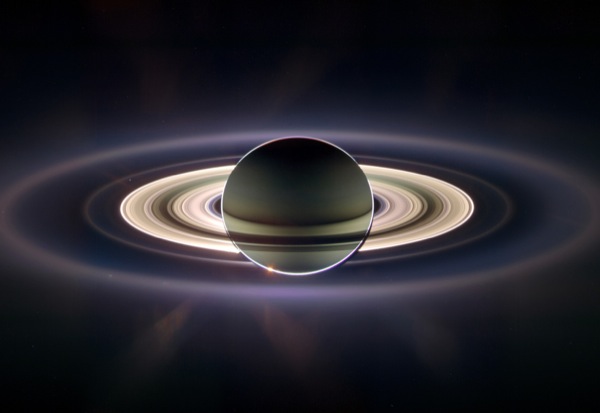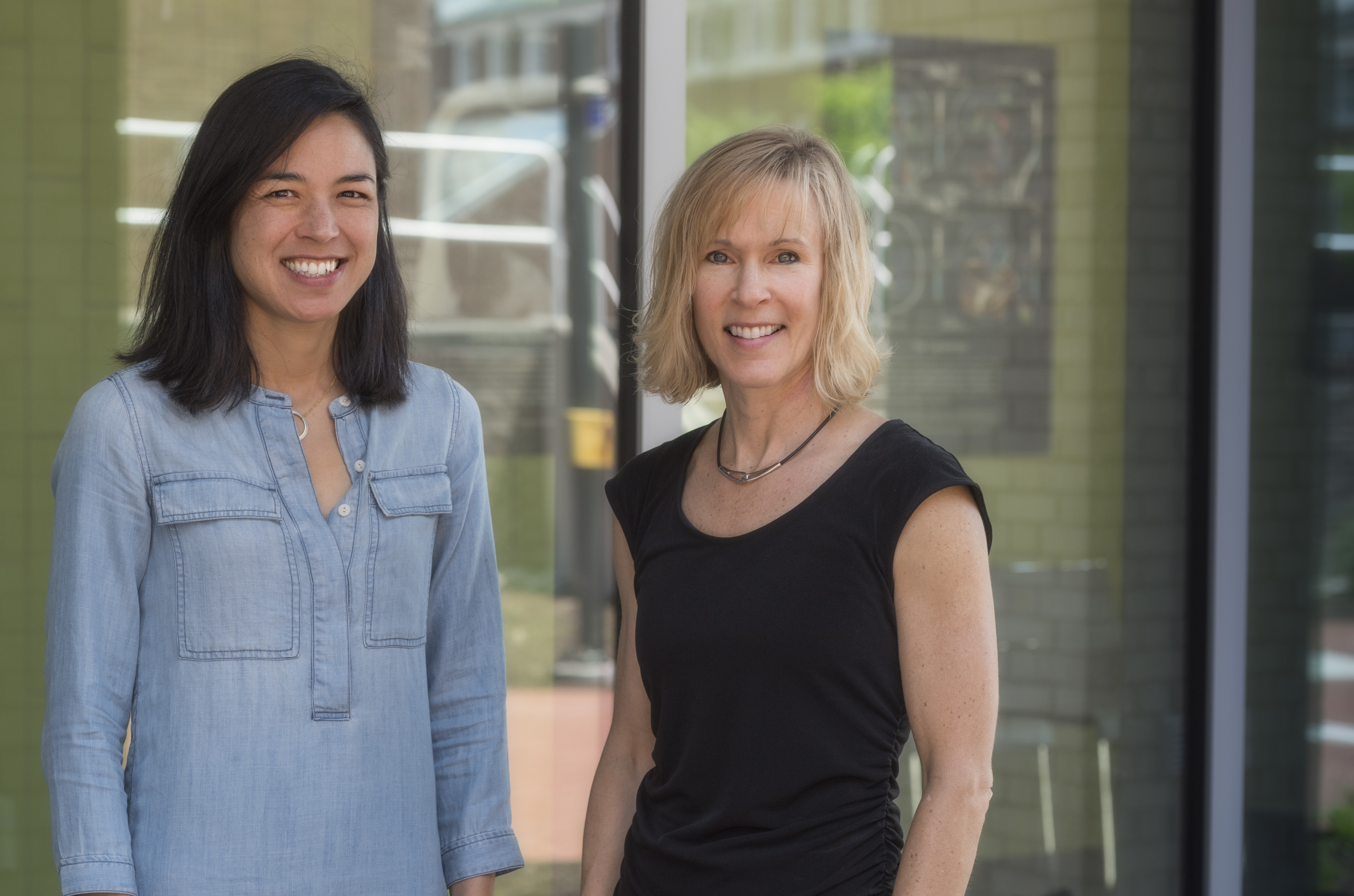


Cassini 'profoundly productive'
Majestic Saturn yields more cosmic secrets, imaging team leader says
4:18 p.m., Oct. 16, 2014--Flinging ourselves and our machines off Earth, we’ve explored just about every corner of our solar system during the past five decades, but we’re far from done, according to Carolyn Porco.
As leader of the imaging team for the Cassini mission, a joint venture between the United States and Europe, Porco has been busy for the past decade unveiling the mysteries surrounding majestic Saturn, its halo of rings and many moons.
Research Stories
Chronic wounds
Prof. Heck's legacy
Porco shared images of her team’s cosmic discoveries to an appreciative audience of about 500 people on Oct. 15 at the University of Delaware’s Clayton Hall Conference Center. She was the guest speaker for the annual Harcourt C. (Ace) Vernon Memorial Lecture sponsored by the Delaware Asteroseismic Research Center at UD and Mount Cuba Astronomical Observatory.
About the size of a school bus and weighing six metric tons, Cassini was sent into space on top of a repurposed missile. It looped around the solar system twice and got a gravity assist from the planet Jupiter to reach Saturn’s orbit on July 1, 2004.
Since then, Cassini has documented such awesome phenomena as a major storm that lasted 200 days, wrapping its way around the ringed planet, and a strange hexagon feature about two Earths across, where the wind blows at a speed of 220 miles per hour. (It’s actually akin to the jet stream on Earth.)
But what about those famous rings — what are they made of? Mostly water ice, from the finest talcum powder to boulders the size of apartment buildings, moving at 225 miles per hour.
Although the rings are one to two stories tall, they are paper-thin and would stretch the distance between Earth and the moon. Astronomers identify them alphabetically as A-ring, B-ring, and so forth.
When Cassini was slowed down to enter Saturn’s orbit, it glided across the rings like a cruise missile, taking images of what it saw. Porco spoke of spiral density waves, of particles with inclined orbits that leave the ring plane warped like corrugated cardboard, and of mountainous piles of rubble drawn out of the ring plane.
“I love imagining I’m in a shuttlecraft flying over the rings, over a plane of white debris and see a pile of rubble a mile and a half wide. That needs to go in a movie,” said Porco, who has contributed to such productions as Star Trek.
Saturn’s skies are literally “spangled with moons,” with 60 or so in existence, and one moon is larger than the United States.
Saturn’s Titan is 50 percent larger than our moon. On Titan, it is dark, misty and cold, enshrouded in a globe of haze. Predicting that its surface would be filled with liquid hydrocarbons, Porco imagined “standing on the shores of a Lake Michigan filled with nail polish remover.”
Equipped with cameras and radar of the same wavelength used in your TV remote, Cassini launched a probe that drifted down to Titan’s surface and took measurements for two-and-a-half hours plus panoramic images. The probe landed in a mudflat, wet with liquid methane, and began confirming the scientists’ hunches. “It was like a Jules Verne adventure come true,” Porco said.
The most thrilling discovery, to date, Porco said, is associated with Enceladus, a small moon about the size of Great Britain that is embedded in Saturn’s E-ring. It has a fractured surface that is emitting enormous heat along with jets of fine icy particles (which feed a plume that eventually forms Saturn’s E-ring).
Porco says these geysers erupt from a salty sea in the south polar region. Could they hold life?
“Enceladus could be snowing microbes,” Porco said.
When its mission concludes in 2017, with “a nosedive into Saturn,” Cassini will go down as one of the most profoundly productive missions ever flown, Porco said.
The reason we study other planets is to put our own into context, Porco said. She reminisced about how she came to know astronomer Carl Sagan in the 1980s. The famous Pale Blue Dot image of Earth taken by the Voyager space probe at his request reminds us of our place in the cosmos and how we should protect our home, the only known planet where life exists.
Last year, she sought to capture a new Pale Blue Dot image and invited people the world over to “Go out, look up, think about all of us, the interplanetary salute between robot and maker, and smile.” And many did.
“One world across interplanetary space to another, so small — that is what makes us extraordinary inhabitants of planet Earth,” Porco said.
Article by Tracey Bryant
Photos courtesy of CICLOPS/NASA/JPL-Caltech/SSI and by Lane McLaughlin









